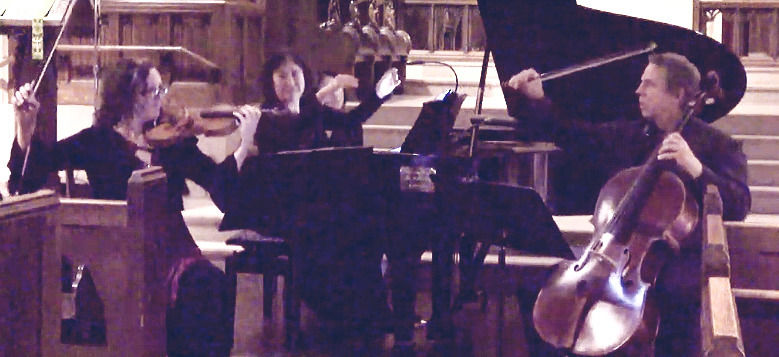Chamber music is the classical musician's jam session
- Bekka Eöwind

- Sep 12, 2019
- 3 min read

I had the good fortune to stand up and play violin with friends at an open mic in a friendly local bar. An audience member, fellow folk musician, proposed his theory that classical musicians probably don't sit around enjoying drinks and playing casual, "fun" music together. His impression was that we are all very serious in that situation, and aren't allowed any creativity to be ourselves.
Classical players getting together socially to read or rehearse for an evening is equivalent to non-classical musicians having a jam session. Community, sustenance, music we share an interest in, instruments we know how to play. Music flows.
At any moment in a jam, no one really knows what the next moment will sound like. We each have a concept of where we want to go, and how we got there, but we haven't experienced this exact iteration of the song before. The guitarist may re-voice his chord, or I may be heading for a note I didn't choose last time; I didn't even imagine that note last time. I can see the vocalist smile because my new note supports the melody he is singing. It's not like we're making it all up from scratch every time. These are tunes we've played a thousand times, and others have been playing them too for decades, maybe centuries. We play them every time we get together. We're used to the flow of the progression, and we trust it to support us while we fiddle around with the details of the moment. The piece of music is recognizable by the chords, the melodies, the lyrics, the beat.. and yet we've changed certain harmonies, certain inflection in the rhythm, maybe substituting a chord for extra tension, or even replacing whole melody lines, just to reflect the inspiration of where we are in the universe at that moment. The result has never happened before. It is part of a continuing pattern that defines that music, that tune, that genre, that group of friends or strangers. We are improvising, playing by heart, communicating with each other and with the audience in a special language that we each understand according to our individual experience.
My trio selects a piece written two centuries ago, which has every single note prescribed, carefully imagined and blended by the composer, long dead, survived by the art he left behind. Publishers have carefully curated it; pianists, cellists, and violinists, past and present, have faithfully rehearsed, performed, recorded every note as it looks on the page. Here we are, with our scores on the stand, sight-reading the piece for the first time. We diligently obey the dynamics, the tempo marking, the articulation. We count the rests. We probably have listened to the piece before, live or recorded. It may be a favorite that we obsessed on for three days in the headphones nonstop. Now it is our turn to get in the creative mind of that composer, and of all the musicians who have shared this piece before us. At any moment in the session, no one really knows what the next moment will sound like. Will the cellist soar into the top of his melodic phrase and send shivers across my shoulders? Will I make eye contact with the pianist as we share a particular cadence? Those live human contributions influence the meaning of the notes I'm playing, which influences the meaning of the notes my friends are playing. We play the piece every time we get together, wondering what the composer intended, how the cello part and violin part intertwine in the fantastical setting of b minor, what is the plot with no lyrics to describe it? A musical scene emerges each time we play it, growing more colorful and more detailed. Every time uncovers a bit more of the mystery; we experience each moment with new understanding of the piece, the composer, ourselves, music.

The power of musical communication comes from beyond the chords, the melodies, the notes on the score or chart. Regardless of whether we are reading or playing from memory, "classical" or "folk", for the first time or the hundredth time, it is human presence that makes the music flow.



Comments